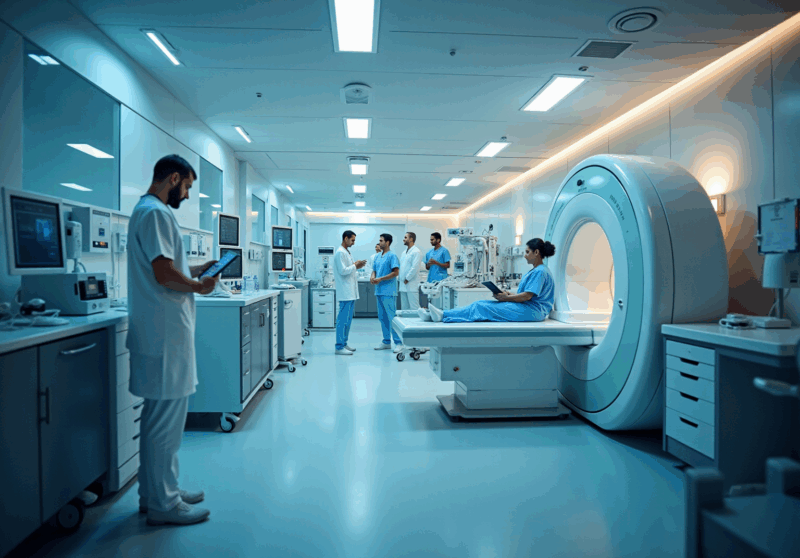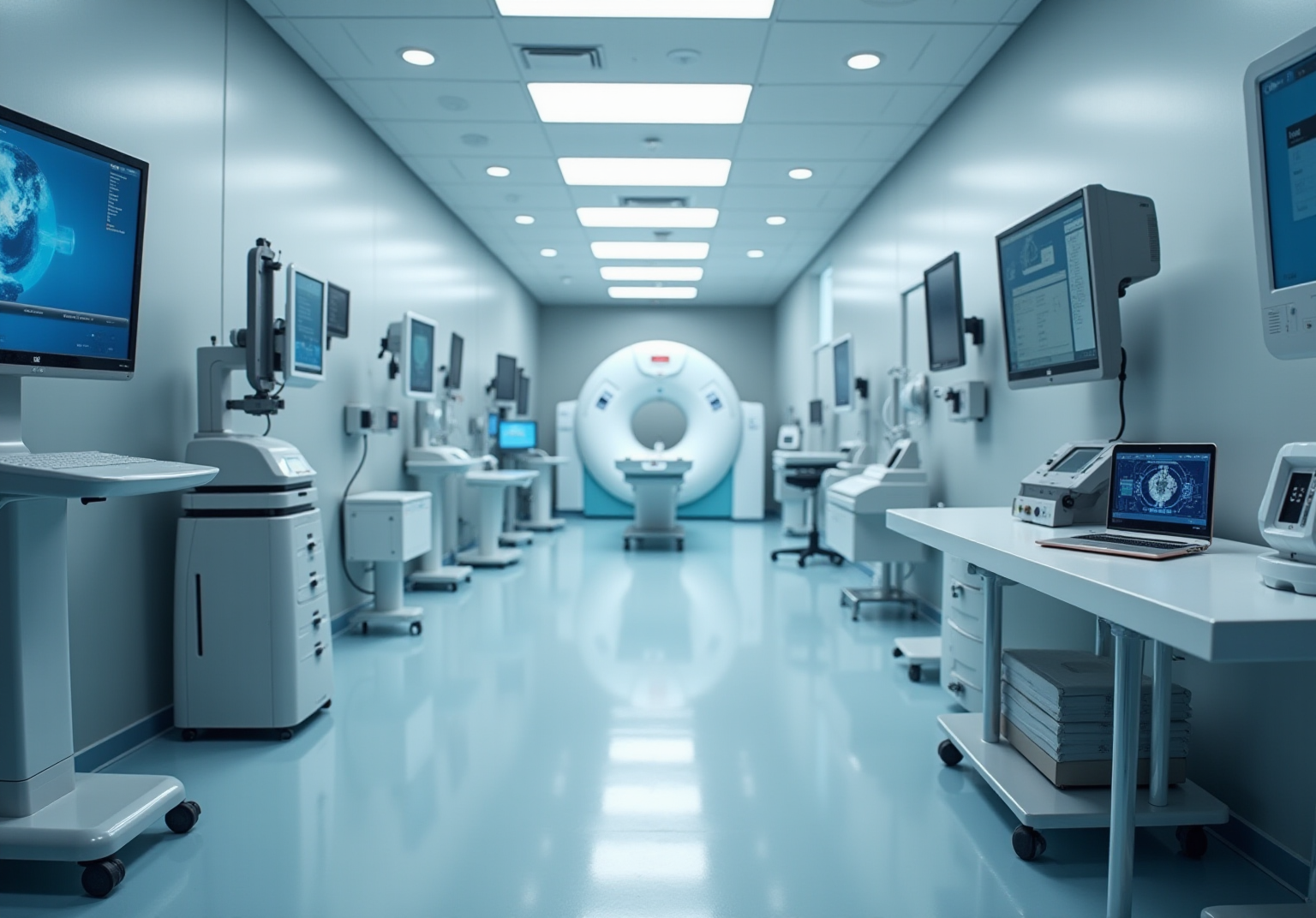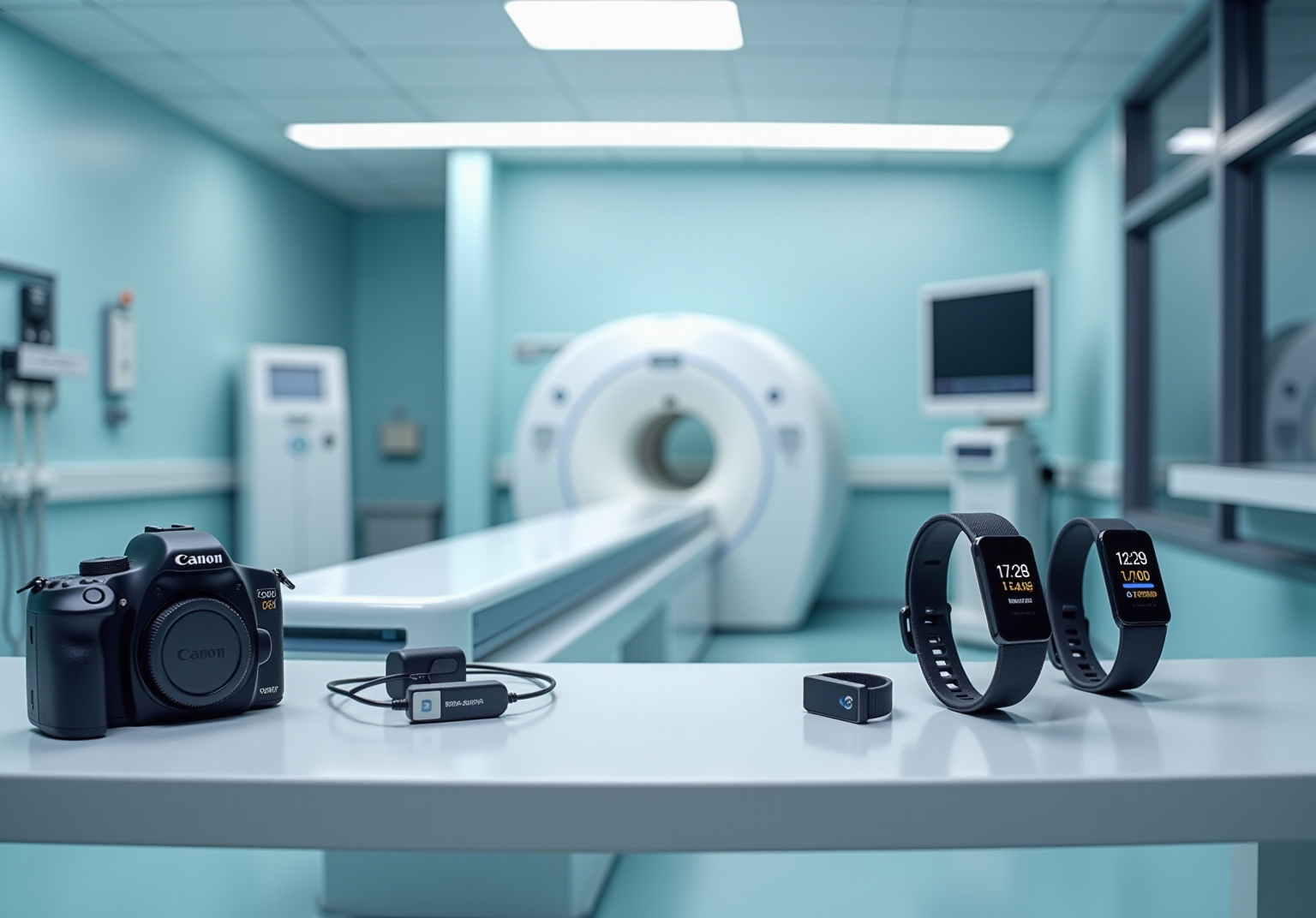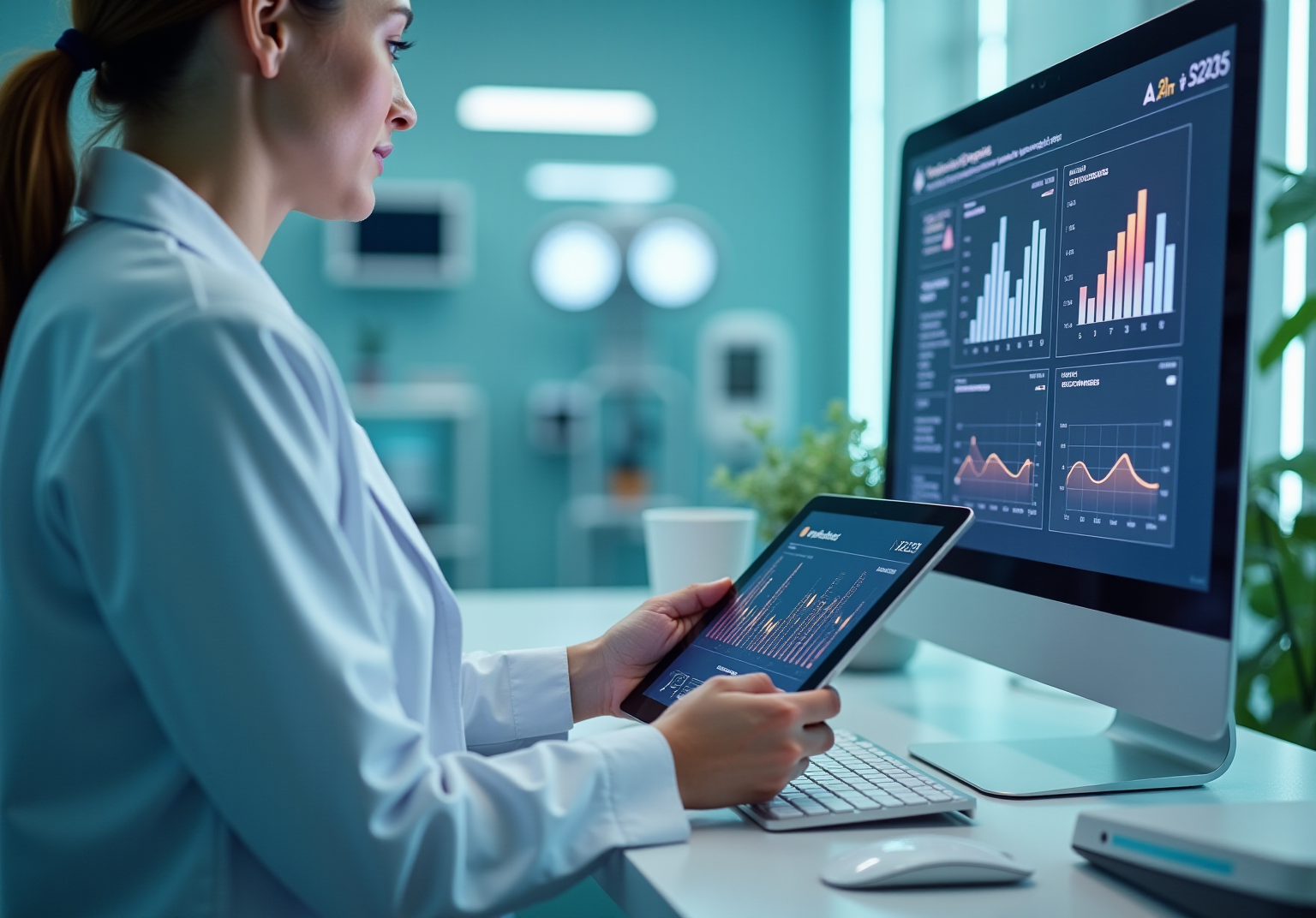
The article underscores the critical importance and impact of technology in the medical field, capturing attention by emphasizing its essential role in enhancing diagnostic accuracy, treatment outcomes, and healthcare delivery efficiency. This assertion is supported by compelling evidence of advancements, such as telemedicine and AI-driven diagnostic tools, which significantly improve access to care and facilitate earlier disease detection.
These innovations not only transform patient care but also streamline operational processes within healthcare systems, ultimately generating a desire for continued investment in technological solutions that enhance healthcare delivery.
The realm of healthcare is undergoing a transformative shift, propelled by rapid advancements in medical technology that are redefining patient care and operational efficiency. As tools evolve from basic instruments to sophisticated systems, such as AI-powered diagnostics and telehealth platforms, the potential to enhance treatment outcomes and streamline healthcare delivery becomes increasingly evident. However, with such innovation arises a pressing question: how can healthcare systems effectively integrate these technologies to meet the rising demands of patients while ensuring quality service?
Healthcare tools encompass a diverse array of instruments, devices, and systems designed to diagnose, monitor, and address health conditions. This spectrum extends from basic instruments like thermometers to advanced machinery such as MRI machines and robotic surgical systems. The importance of technology in the medical field is underscored by its ability to enhance diagnostic accuracy, improve treatment outcomes, and streamline healthcare delivery processes. Notably, advancements in technology in the medical field, particularly in telemedicine, have facilitated real-time communication between individuals and providers, significantly enhancing access to care, especially in underserved regions. Furthermore, the integration of technology in the medical field, specifically artificial intelligence in diagnostic tools, has been shown to improve disease detection accuracy, resulting in better outcomes for patients.
As we look ahead to 2025, the healthcare innovation landscape is characterized by rapid advancements, with the global devices market projected to reach approximately $612.7 billion, growing at a compound annual growth rate of 5.4%. This growth signifies an increasing demand for sophisticated health solutions that enhance patient care and improve operational efficiency within health systems, driven by technology in the medical field. Expert insights underscore that the role of health innovation and technology in the medical field is vital in transforming client care, enabling providers to manage large volumes of information with greater speed and security, ultimately leading to improved outcomes for those receiving care. The ongoing evolution of technology in the medical field is essential for addressing the complexities of modern health services and meeting the rising demands of both patients and providers.

The development of technology in the medical field has its roots in ancient civilizations, where rudimentary tools facilitated surgical procedures and herbal remedies were employed for treatment. A pivotal moment occurred in 1841 with the invention of the stethoscope by René Laënnec, enabling physicians to listen to internal body sounds.
The 20th century ushered in rapid advancements in technology in the medical field, including the introduction of:
Each of these innovations in technology in the medical field has significantly contributed to a more precise understanding of human anatomy and disease, ultimately enhancing outcomes for individuals and improving healthcare delivery systems. For example, life expectancy in the U.S. rose from 68 years in the 1960s to nearly 80 years today, underscoring the profound impact of these medical advancements on public health.
Moreover, the first successful kidney transplant performed by Dr. Joseph E. Murray in 1954 exemplifies how technology in the medical field has transformed patient care, paving the way for future organ transplants and advancements in immunosuppressive therapies.

Technology in the medical field can be classified into distinct categories, such as:
Each category plays a pivotal role in the technology in the medical field ecosystem. Diagnostic devices, for example, are essential for the early detection of diseases, while therapeutic devices significantly enhance treatment precision. In recent years, monitoring innovations, particularly telehealth solutions, have surged in prominence, demonstrating the impact of technology in the medical field by facilitating remote patient management and broadening access to care.

The effect of technology in the medical field on medical service delivery is profound and multifaceted. Technology in the medical field, such as electronic health records (EHRs), streamlines documentation and enhances communication among medical providers, leading to better-coordinated care. Inferscience’s HCC Assistant exemplifies this transformation by utilizing advanced natural language processing (NLP) and intelligent rules to automate HCC coding workflows, significantly reducing manual effort. This tool enables providers in the medical field to ingest, analyze, and unify both structured and unstructured data within their EHRs, ensuring that overlooked health diagnoses are identified to improve Risk Adjustment Factor (RAF) scores. In fact, 94% of medical institutions consider AI essential to their operations, reflecting a significant shift towards data-driven decision-making. Advanced diagnostic tools powered by AI enable earlier detection of diseases, significantly improving treatment outcomes. For instance, AI-driven predictive analytics are being utilized by 25% of U.S. hospitals to improve care for individuals, demonstrating the practical application of these technologies in real-world settings.
Moreover, the integration of artificial intelligence in medical services is revolutionizing decision-making processes. Inferscience’s solutions not only facilitate personalized treatment plans but also enhance provider-payer collaboration, addressing interoperability challenges that often hinder effective insurance claims processing. With 68% of doctors anticipating to acknowledge benefits of AI in care by 2025, this change not only enhances care quality but also boosts operational efficiency, lowering expenses and administrative loads for medical providers. As medical systems encounter increasing client numbers and wait durations, the utilization of AI solutions, like those provided by Inferscience, is becoming crucial for preserving quality service and enhancing resource management. Overall, the advancements in technology in the medical field, especially through Inferscience’s innovative HCC coding solutions, are reshaping the landscape of healthcare delivery, ensuring that providers can focus more on patient care while leveraging the benefits of AI and EHRs.

The integration of technology into the medical field is not merely a trend; it is a transformative force reshaping healthcare as we know it. By enhancing diagnostic accuracy, improving treatment outcomes, and streamlining healthcare delivery, technology plays a crucial role in addressing the complexities of modern health services. As advancements continue to unfold, the significance of these innovations becomes increasingly evident, particularly in their ability to enhance access to care and improve patient experiences.
Key points throughout this article highlight the historical evolution of medical technology, from the invention of the stethoscope to the latest AI-driven diagnostic tools. The importance of various medical technologies, including diagnostic equipment, therapeutic devices, and monitoring tools, underscores their indispensable roles in early disease detection, treatment precision, and remote patient management. Furthermore, the impact of technology on healthcare delivery is profound, with tools like electronic health records and AI-driven analytics revolutionizing how medical providers deliver care and manage patient information.
As the healthcare landscape continues to evolve, recognizing the vital role that technology plays in improving patient outcomes and operational efficiencies is essential. Embracing these advancements is not merely beneficial; it is imperative for healthcare providers aiming to meet the rising demands of patients and ensure high-quality care. The future of medicine lies in the ongoing commitment to innovation, making it crucial for stakeholders to stay informed and engaged with the latest developments in medical technology.